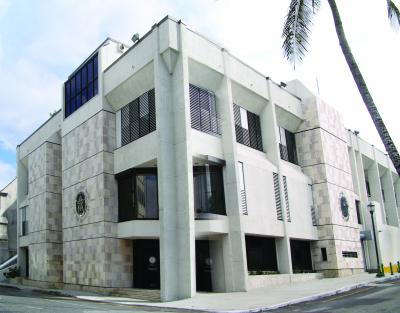NASSAU, BAHAMAS — The Central Bank said yesterday that the country’s external reserves are forecasted to remain “buoyant” over the course of the year, with external balances remaining “more than adequate” to sustain the Bahamian dollar currency peg.
The regulator in its Monthly Economic and Financial Development Report for April noted that for the review month, external reserves expanded by $92.6 million to $3,066.6 million, outpacing last year’s $3.1 million uptick, buoyed by net foreign currency inflows through the private sector.
“Underlying this development, the Central Bank’s net foreign currency purchases from commercial banks advanced to $131.1 million, from $45.3 million in 2021,” the report stated.
“Further, commercial banks net intake from their clients strengthened to $118.3 million from $44.9 million in the prior year. Meanwhile, the Bank’s net sale to the public sector moderated to $36.3 million from $42.4 million a year earlier,” the regulator added.
It further noted that preliminary data on foreign currency sales for current account transactions showed that monthly outflows rose by $119.7 million to $518.2 million in April, vis-à-vis the same period in the prior year.
“The outcome reflected increased payments for oil imports, by $53.1 million, “other” current items—mainly credit and debit card financed imports—by $37.5 million, and non-oil imports by $28.2 million. Further, factor income and travel-related transactions grew by $5.5 million and by $2.0 million, respectively. Providing a modest offset, foreign currency usage for transfer payments decreased by $6.6 million.”
In its outlook, the regulator noted that the domestic economy is expected to sustain its recovery trajectory in 2022, “undergirded by an ongoing strengthening in tourism sector output”.
It added: “However, the sector’s downside risk exposures persist, as new strains of the COVID-19 virus emerge, which could potentially stall progress made on the international health front and dampen the travel industry prospects. In addition, elevated international fuel costs could weaken the travel sector’s competitiveness, while the major central banks’ counter-inflation policies could erode the travel spending means of consumers in key source markets.
“Nonetheless, new and ongoing foreign investment-led projects, along with post-hurricane reconstruction works, are projected to provide continued stimulus to the construction sector.”
The regulator noted that in the labor market, the unemployment rate is anticipated to remain above pre-pandemic levels, with any job gains concentrated mainly in the construction sector and the rehiring of tourism sector employees.
The regulator also pointed out that financing of the estimated budgetary gap is expected to require both domestic and external borrowings, but with increased sustainability of domestic sources.
“Monetary sector developments should continue to feature high levels of banking sector liquidity, as commercial banks maintain their conservative lending posture,” the report stated.
“Further, external reserves are forecasted to remain buoyant over the year, supported by anticipated foreign currency inflows from tourism and other net private sector receipts, thus ending 2022 well above international benchmarks. Consequently, external balances should remain more than adequate to sustain the Bahamian dollar currency peg.”

